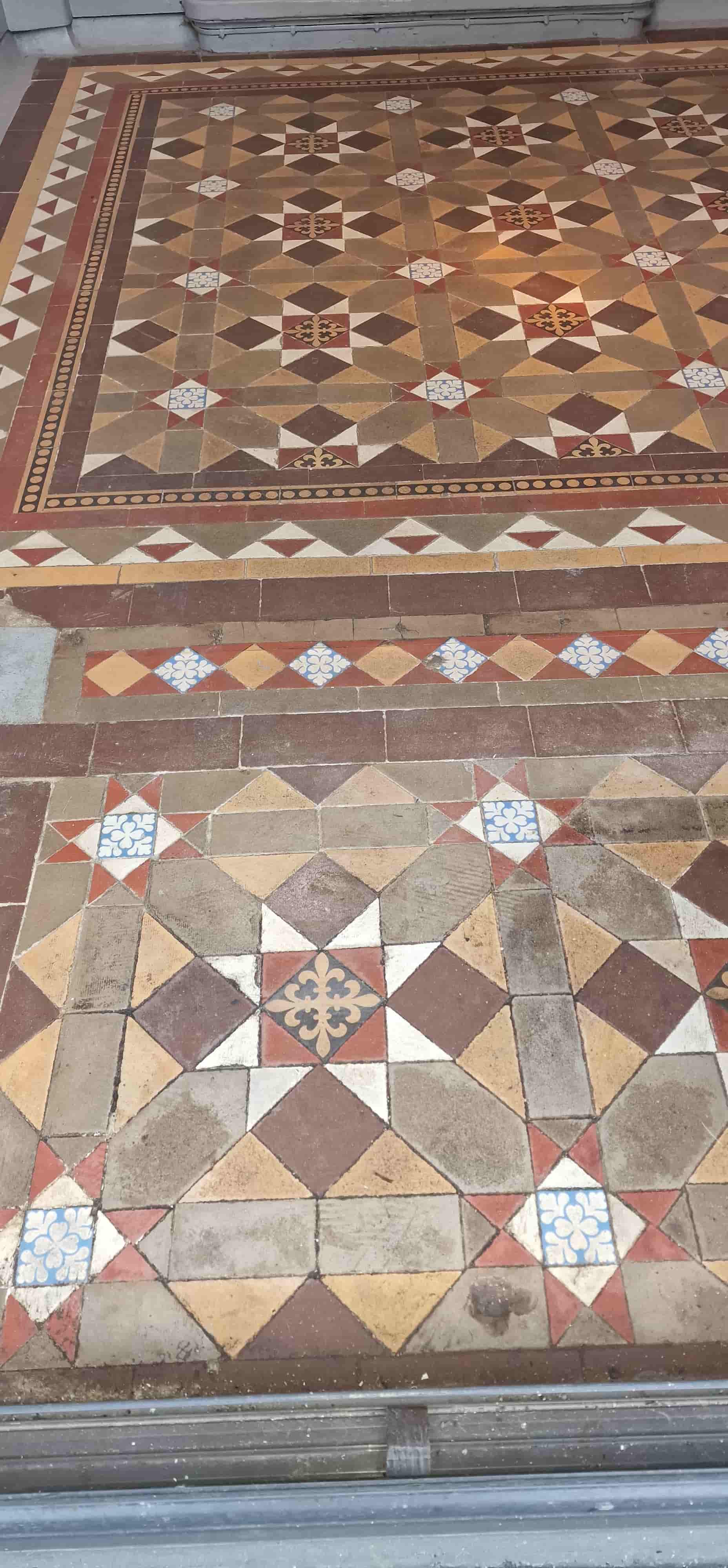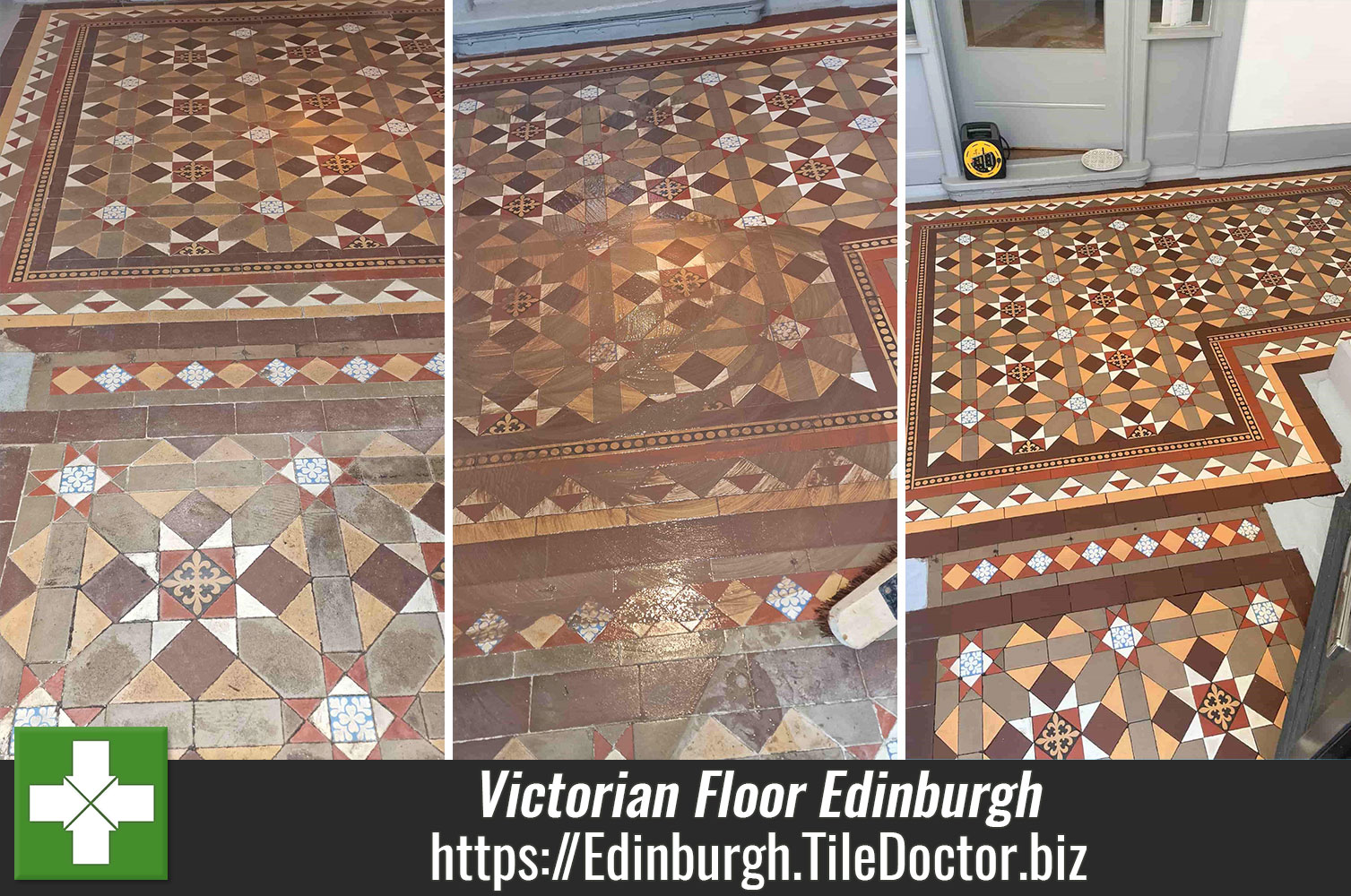Low Moisture Cleaning of a Victorian Period Floor using Tile Doctor Acid Gel in Edinburgh
Details below of a another Victorian Hallway floor restoration that we completed recently in Edinburgh. The owner of the property was unhappy with how dull the floor had become and was keen for it to be renovated back to health.
Old Victorian tiles are porous and so do need to be sealed to protect them from ingrained dirt and staining, unfortunately sealers don’t last for ever and do wear down with use so if you want to keep your floor looking clean you do need to maintain the sealer.

I’ll add more detail below but in total this project took three days to complete as there were a lot of tiles that had to be lifted and fixed back down again, this was all done on the first day and once set the whole porch area had to be regrouted.
Renovating a Victorian Tiled Hallway Floor in Edinburgh
As mentioned above the first day was spent ensuring the tiles were secure. This involved checking every tile by hand in the hallway and porch floor and identifying all the problems so they could be removed cleaned up and then re-laid with fresh adhesive.
It’s a lot of manual work but by the end of the first day the tiled floor was solid and ready for cleaning although I decided to come back to do the cleaning a few days later to give the repairs time to set.
Old floors like this one don’t have a damp proof membrane under the floor so you have to be wary of how much water you use during cleaning, if you use too much it could take days or even weeks before the floor dries out you can seal it. Fortunately, we have a solution and for situations like this we adopt a method called “Low Moisture Cleaning”

This method primarily involves giving the floor an acid rinse using Tile Doctor Acid Gel which being a gel is very easy to control. The gel is applied to the floor and left to dwell for a while before it is worked in with a coarse 200-grit burnishing pad. Then after going over the floor a few times with the pad the slurry extracted with a wet vacuum. The process was repeated two to three times until I was satisfied that tiles were as clean as possible. I then wiped the floor using a damp cloth dipped in a bucket with a mixture of Grout Clean-Up and water.
This method allowed us to get the tiles as clean as possible without the need of any alkaline cleaning products which can cause efflorescence issues later when the floor dries. Efflorescence is a common problem on floors of this age where a damp-proof membrane has not been fitted; moisture rises through the sub floor and tile carrying salts which then get deposited on the surface of the tile as the moisture evaporates. Once complete the floor was left to dry off overnight with an industrial fan in place to help with the drying and to ensure it would be ready for sealing the next day.
Sealing a Victorian Tiled Hallway Floor
On the final third day we returned to seal the floor testing the moisture level first with a damp meter to ensure the floor was dry. The results were positive, and I was happy that it was within the correct tolerance for the sealer to be effective. To seal the floor, we used Tile Doctor Colour Grow, applying three coats and letting each coat dry before applying the next.

The sealer enhanced the deep colours in the tile and gave the floor hardwearing protection that should last many years to come, the fresh sealer will also make them easy to clean. I should mention that Colour Grow is also fully breathable which is perfect for a floor with no damp-proof membrane, in that it won’t trap moisture under the tiles where is could eventually spread to the walls and lead to rising damp.
Before leaving I took time to explain the importance of using a neutral pH tile cleaning product such as Tile Doctor Neutral Cleaner for day-to-day cleaning. A lot of products you find in supermarkets contain bleach and are simply too strong for cleaning a sealed surface and will quickly erode the sealer with use.

